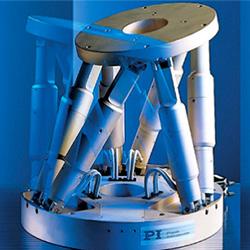DDMRP: The CEOs secret to manufacturing transformation
Many new CEOs want to stamp their mark on a business by overseeing a significant shift or transformation that reinvigorates the company. Here, Roger Fleury, Managing Director of Microsoft Dynamics provider Ardent Solutions, explains how CEOs can achieve this by evaluating supply chain management and considering demand-driven material requirements planning (DDMRP).
According to research conducted by the US National Bureau of Economic Research in 2017, CEOs typically fall into one of two categories: managers or leaders. The research indicated that the latter typically ran more productive and profitable companies in complex industries, with an inclination to lead change across the company.
This ambition to lead change at the highest level and leave a mark on the company is what we often also see in new CEOs. Its not difficult to imagine why this is the case, as there is usually an element of wanting to live up to and exceed expectations. This typically involves benchmarking against previous performance and finding small areas of development that drive incremental improvements.
Instead, one of the most valuable things a CEO can do to lead a company to success is to look strategically at the companys processes from a top-down perspective. For many businesses, one of the biggest areas ripe for improvement is supply chain management.
By looking critically at the supply chain, most will find that it is managed inefficiently and expensively, with a failure to manage right-size inventories creating problems with work flow from production to delivery. By embracing a new methodology, such as DDMRP, CEOs can lead their company to new levels of peak performance.
DDMRP is a modern development on traditional manufacturing requirements planning (MRP) methodology that prioritises inventory management throughout the supply chain. Using this approach, production planners in a business can decouple their supply chain at strategically selected points, at which they can hold buffer stock to keep production running smoothly.
For example, an automotive manufacturing companys CEO might spot that the company often holds too many fasteners in its inventory and a dangerously low number of body side-panels, leading to frequent risks of shortage.
DDMRP software, such as that provided by Ardent Solutions, allows you to view stock levels in real-time. The dynamically adjusted buffer levels allow inventory to be kept at a constantly acceptable level, with more stock ordered if held numbers dip. Effectively, this eliminates the risk of supply shortages.
It is by no means a snap decision or quick solution to adopt DDMRP methodology, as it requires buy-in at every level of the business to be effective. However, CEOs wanting to stamp their mark onto their company can use it to maximise productivity, increase profit and strengthen market position.
For more information on DDMRP and how it can help your business, contact Ardent Solutions - an affiliate partner of the Demand-Driven Institute - on +44 (0) 344 880 6146 or info@ardentsolutions.co.uk.
Featured Product

